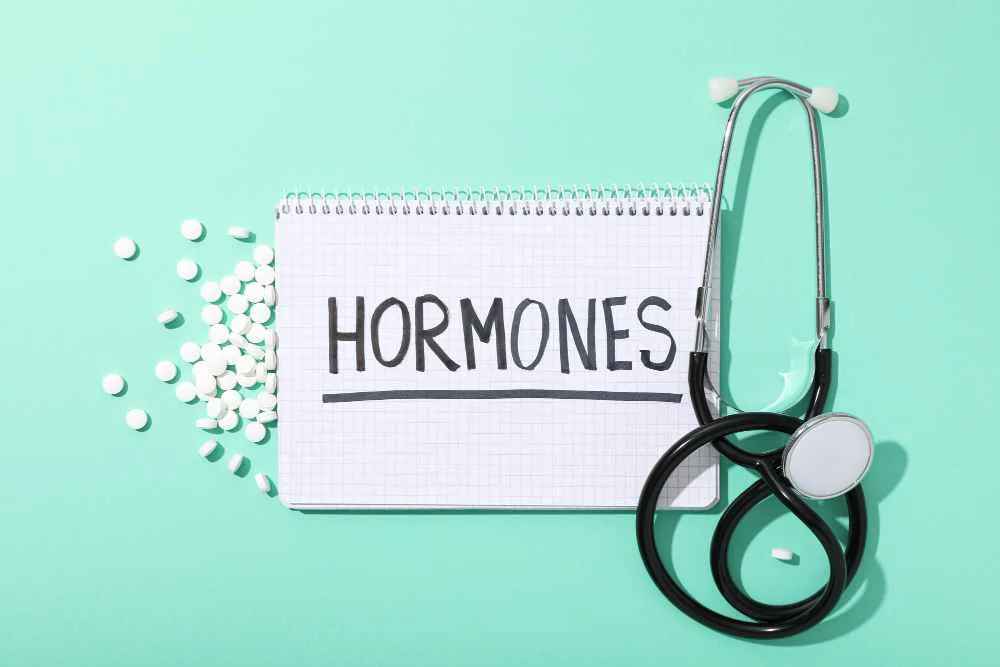Testosterone replacement therapy (TRT) can make a dramatic difference for men with low testosterone, but dosage is everything. A question many people ask is: Is 1 mL of testosterone a week enough? The truth is, there’s no one-size-fits-all answer. Your age, health status, baseline hormone levels, and treatment goals all play a role in determining the right dose.
For some, 1 mL per week (often equivalent to 200 mg of testosterone cypionate or enanthate) works effectively, while others may need adjustments for safe and optimal results. In this article, we’ll break down whether 1 mL is the right amount, the risks of under- or overdosing, and how to get the most out of TRT.
Is 1 mL of Testosterone a Week Enough?
1 mL of testosterone may or may not be enough for everyone. The key is that the amount of testosterone (in mg) matters, not just in the volume (in ml). For some individuals, 1 mL of testosterone injections (e.g., testosterone cypionate or enanthate) per week can be sufficient to raise low testosterone levels or manage symptoms associated with them. But, for others, it may not be enough or may be very excessive.
Standard TRT Dosing Guidelines
Here are the typical starting TRT doses prescribed by a doctor:
100 to 200 mg a week for many men
50 to 100 mg a week for older men or those with hormone sensitivity
Bottom line: While 1 mL per week works for many, your testosterone dose should be tailored to your body’s needs and adjusted based on lab results.
Factors Impacting Testosterone Dosage Needs
Here are the factors that affect the dosage needs of testosterone:
1. Concentration
1 mL may contain either 100 or 200 mg of testosterone, which may be the right weekly dose for some people but excessive for others.
But for many people, the treatment starts with a low weekly amount.
2. Individual Needs
Depends on the severity of the lack of testosterone, age, body weight, and health status.
Some people might require high doses (400 mg) to achieve maximum testosterone levels, while others might respond greatly to 1 ml (200 mg) a week.
3. Baseline Testosterone Levels
For individuals with excessively low baseline (initial) testosterone levels, 1 mL is sufficient to achieve the normal range.
However, people with a mild deficiency of testosterone may not experience similar benefits and need a different dose or dosing schedule.
4. Health Conditions
Certain medical issues, such as diabetes and heart-related diseases, need careful adjustment of testosterone therapy.
This is because these health problems can lead to increased body fat and blood sugar levels, which, in turn, can suppress testosterone levels.
5. Body’s Response to TRT
Some people experience excellent results from prescribed 1 mL a week, while others might not. In such cases, doctors may help with dosage adjustments.
The providers monitor the testosterone levels by conducting blood tests that will let them know whether the right dose is prescribed or not.
6. Testosterone Half-Life & Injection Frequency
Testosterone cypionate and enanthate relatively have a long half-life (8 and 7 days, respectively), meaning 1 mL a week may offer stable levels the entire week.
However, some people may benefit from more frequent injections (2 times per week) to avoid the risk of fluctuations in testosterone levels, as this can lead to side effects like mood swings.
7. Age & Metabolism
With aging, the body might respond differently to testosterone injections.
A study reports that older individuals may require a higher dose due to decreased testosterone production, and younger individuals tend to respond well to lower doses.
Why 1 mL of Testosterone May or May Not be Enough?
Testosterone is generally measured in mg, but it is given in mL. The testosterone's concentration in the solution actually determines the exact amount of testosterone you are receiving. The 1 mL of testosterone injection can deliver the testosterone in two different concentrations:
100 mg/mL
200 mg/mL
If you are administering 1 mL of 200 mg/mL testosterone cypionate, you are receiving 200 mg of testosterone. This amount differs from what you get out of 1 mL of 100 mg/mL, which is 100 mg of testosterone. Hence, mg matters not just the volume.
Why Proper Dosage Is Important in TRT?
The given testosterone amount directly impacts the outcomes of the testosterone replacement therapy. Here's how:
Underdosing may not improve symptoms well.
Overdosing may contribute to unwanted side effects, like mood changes and high RBC count.
Hence, appropriate dosing is essential, allowing the endocrine system of the body to control the symptoms without triggering the adverse cardiovascular and metabolic complications. This proper balance supports the safe and effective management of low levels of testosterone for the long term and improves the quality of life.
Benefits of Proper Testosterone Dosage
Taking the correct testosterone dosage can have many benefits that significantly improve the quality of life for people undergoing testosterone therapy. Those benefits include:
Improved Energy Levels
Many people report high energy levels and liveliness when their testosterone levels are not managed properly.
This can contribute to improved daily productivity and satisfaction with overall well-being.
Enhanced Muscle Mass
For people seeking muscle mass and strength, appropriate supplementation of testosterone can cause significant gains.
This helps individuals, especially athletes and bodybuilders, to build and maintain lean muscles.
Better Mental Clarity
High energy levels aid in improving mental clarity and mood.
This enhances focus, benefiting personal as well as professional life.
Increased Engagement in Physical Activities
With higher energy levels, people find it easier to practice exercises or physical activities.
This consequently lead to better fitness and improved health outcomes.
Better Mood and Libido (Sex Drive)
Balanced testosterone levels can positively impact mood and sexual drive.
This helps feel happier and more emotionally stable, leading to enhanced sexual performance, better relationships, and personal satisfaction.
Improved Bone Density
By stimulating osteoblasts (bone-forming cells) and being converted into estrogen, proper testosterone therapy can improve bone density, supporting bone health.
Also, it decreases bone resorption, which is the breakdown of bone, thus alleviating the osteoporosis risk with aging.
How to Know if Your Testosterone Dose is Too High or Too Low?
Watch for these signs that can indicate that a 1 mL of testosterone dosage is not suitable for you:
Signs That Your Dose is TOO LOW:
Excessive Low Energy: If you excessively feel tired despite taking 1 mL of testosterone, this means that the dose might be very low for your health needs.
Mood Swings: If you experience extreme irritability or mood changes, this may show that the current dose isn't providing the correct balance.
Low Muscle Growth: If you are regularly exercising and taking a proper dose, but not noticing any positive changes in your muscle strength or mass, it may indicate that the dose is not enough.
Decreased Erectile Dysfunction or Libido: If you do not see any improvement in your libido (sexual drive) or sexual function, the dose might be insufficient.
Acne or Hair Loss: If you experience acne or major hair thinning, it may mean that the dose is extremely high for the body to tolerate.
Unexplained Weight Changes: In case there is a huge weight loss or gain without any changes in your diet or exercise regimen, it can indicate the use of an inappropriate dosage.
Signs That Your Dose is TOO HIGH:
- Acne or oily skin
- Increased aggression or irritability
- Hair thinning or male pattern baldness
- Unexplained weight gain or bloating
- High red blood cell count (risk of blood clots)
If you experience any of these issues, consult your doctor for blood tests and dosage adjustments.
Regular Blood Test is the Key
The only ideal way to understand whether your testosterone replacement therapy is working effectively is through blood tests. The testing is generally done every 3 to 6 months to evaluate the treatment response and guide dosage adjustments. Most healthcare providers will test for:
Total and Free Testosterone: Diagnose hypogonadism (where the body is not producing sufficient sex hormones) and check for TRT effectiveness.
Estradiol (E2): Ensure the levels of estradiol have not become extremely high because of the conversion of testosterone.
Hematocrit/Hemoglobin: Monitors high red blood cell (RBCs) counts, and according to 2023 research, increased RBCs lead to blood clots.
Liver enzymes: Detects the symptoms of liver dysfunction, which is a possible side effect associated with TRT.
Lipid profile: Check for cholesterol and other fat levels in the blood to detect risk related to cardiovascular health, which is another potential side effect of TRT.
The blood work can:
Ensure the testosterone levels are in the optimal range.
Helps with early detection of imbalances of other hormones (e.g., DHT and estradiol) that can increase with TRT.
Assist the doctors in precisely adjusting the dose or frequency of injection for better management of symptoms and a lower risk of side effects.
Monitors cardiovascular health by tracking hemoglobin and hematocrit levels, which helps prevent the chances of stroke.
Make sure the treatment is not stressing the kidney and liver function.
Why is it Crucial to Consult a Healthcare Professional?
Self-administering testosterone replacement therapy or adjusting the dose on your own without the guidance of medical professionals is risky. It may lead to an increase or decrease in testosterone levels in the body, which may lead to:
Cardiovascular problems
Liver stress
Hence, see a doctor for advice, helping you with a customized dose according to your symptoms, blood tests, and response to the treatment.
How Much Testosterone Per Week Is Normal?
Here is the table for the general reference of the weekly dose of testosterone. However, always seek a doctor's advice who can guide you based on your body's needs or health goals.
Testosterone Type | Common Concentration | Typical Weekly Dose | Dosage in mL Per Week |
|---|---|---|---|
Testosterone Cypionate | 200 mg per mL | 100 to 200 mg | 0.5 to 1.0 mL |
Testosterone Enanthate | 200 or 250 mg per mL | 100 to 200 mg | 0.4 to 1.0 mL |
Testosterone Propionate | 100 mg per mL | 25 to 75 mg (more frequently) | 0.25 to 0.75 mL (2 to 3 times a week) |
Testosterone Undecanoate | 1000 mg per 4 mL | 1000 mg every 10 to 14 weeks | 4 mL every 10 to 14 weeks |
Testosterone Gel (Topical) | 1% or 1.62% strength | 50 to 100 mg a day | N/A (applied daily) |
Understanding How Injection Frequency Matters?
Beyond the weekly dose, how the dose is divided impacts effectiveness. Here's how:
Once weekly injections: One time a day, but can lead to fluctuations in testosterone levels, causing peaks and troughs in mood and energy levels.
Twice weekly injections: Splitting the dose (for instance, 100 mg every 3.5 days), which offers more stable hormone levels. This leads to better results with fewer side effects.
More frequent injections: Some individuals take the injections on alternate days or even every day with smaller doses for maximum stable hormone levels.
What Happens if You Take Too Much Testosterone?
If you take testosterone in high doses, it can lead to serious health risks, including:
Impotence (inability to achieve a firm erection for sexual intercourse)
Hormonal Imbalance – Can lead to testicular shrinkage and infertility.
Heart Risks – Higher chances of high blood pressure, blood clots, and heart attacks.
Prostate Enlargement – May lead to difficulty urinating.
Increased risk of blood clots
Liver damage/liver toxicity
High blood pressure
Elevated cholesterol levels
Extreme mood swings such as increased aggression, anxiety, or depression.
Solution: Always monitor testosterone levels and side effects with regular blood work to prevent complications.
Benefits of Testosterone Replacement Therapy
If 1 mL is enough, TRT can offer the following health benefits:
Improved muscle strength and mass, making it easy to build and maintain lean muscles.
Increased libido (sex drive), enhancing sexual performance.
High energy levels, helping stay active and productive.
Enhanced mental clarity and mood, supporting mental health.
Improved bone density, alleviating the osteoporosis risk with aging.
Reduced chances of metabolic syndromes, like high blood pressure and cholesterol levels, lowering the risk of heart-related issues.
How Long Does It Take to See Results from Testosterone Injections?
General Timeline of Testosterone Benefits
- 3–6 Weeks: Increased energy, improved mood, reduced depression.
- 6–12 Weeks: Noticeable changes in libido & sexual function.
- 3–6 Months: Muscle growth and strength improvements.
- 1–2 Years: Full benefits in muscle mass, bone density, and fat loss.
Important: If you don’t see results in 3–6 months, consult your doctor to reassess your treatment plan.
How Testosterone Injections Work?
Here's how testosterone injections work to increase your testosterone levels and prevent symptoms associated with them:
Injection: Testosterone is directly injected into the muscle or under the skin in areas like the thighs or glutes.
Absorption: The testosterone then slowly gets absorbed into the bloodstream, where it increases testosterone levels.
Circulation: The testosterone moves to all parts of the body and attaches to androgen receptors in tissues such as the brain, bones, or muscles.
Effects: After binding to these receptors, testosterone shows its effects by improving muscle growth, bone density, mood, and other functions related to low testosterone levels.
Important Note: You must undergo a regular blood test to ensure the appropriate dose is being used. Additionally, it can help avoid side effects or fluctuations in testosterone levels.
Safety Considerations & Downsides
Possible Risks of Improper Dosing:
Cardiovascular risks, like high blood pressure, blood clots, and cholesterol changes
High red blood cell count
Prostate enlargement
Suppression of sperm production, causing infertility
Severe aggression, mood swings, irritability, and depression
Swelling in the hands, ankles, and feet
Hormonal imbalance
Bone density issues, like osteoporosis
Worsening of existing sleep apnea
Strategies to reduce the risks:
Get comprehensive monitoring regularly.
Adjust the dose gradually.
Maintain a good lifestyle, like proper nutrition, exercise, and sleep quality.
Manage your stress by practicing meditation or breathing exercises.
Seek proper supervision from medical professionals.
Be aware and check for warning signs.
Final Thoughts
So, is 1 mL of testosterone a week enough? Well, for some, 1 mL per week (200 mg) is effective for restoring testosterone levels. However, some may need adjustments based on blood test results and symptoms. Regular monitoring with the help of blood tests is key to avoiding side effects and ensuring optimal benefits. Always consult a doctor to determine the right dose for your specific health needs.
Read Also: How To Increase Testosterone Levels Quickly?
Disclaimer: This article is intended for educational and informational purposes only and does not comprise medical advice. Testosterone replacement therapy should always be performed under the careful guidance of a certified medical professional.
अक्सर पूछे जाने वाले प्रश्नों
How much testosterone is in 1 mL?
Each 1 ml of testosterone injection contains 200 mg of testosterone cypionate and 250 mg of testosterone enanthate.
Is 1 mL of testosterone enough to build muscle?
Yes, it can be enough for some. However, the exact dosage can vary depending on fitness goals, a person's needs, age, or body response.
What type of testosterone is best for muscle growth?
Both testosterone cypionate and enanthate are perfect options as they effectively help build muscle mass, reduce fat, and promote recovery.
Can 1 mL of testosterone vials be reused?
Once punctured, it can't be reused as it can give rise to the risk of bacterial growth, contamination, and infection.
Is it safe to use testosterone injections for the long term?
No, it's not as it can lead to risk of cardiovascular disease, low sperm count, blood clots, and prostate cancer.
Can women take testosterone replacement therapy?
Yes, in case of low testosterone levels caused by menopause, surgery, or some medical issues. But the dose is much lower compared to men.
Can testosterone doses be adjusted if 1 mL a week is not sufficient?
Yes, it's adjustable based on symptoms, response to the treatment, and blood test results under medical guidance.
लेखक





